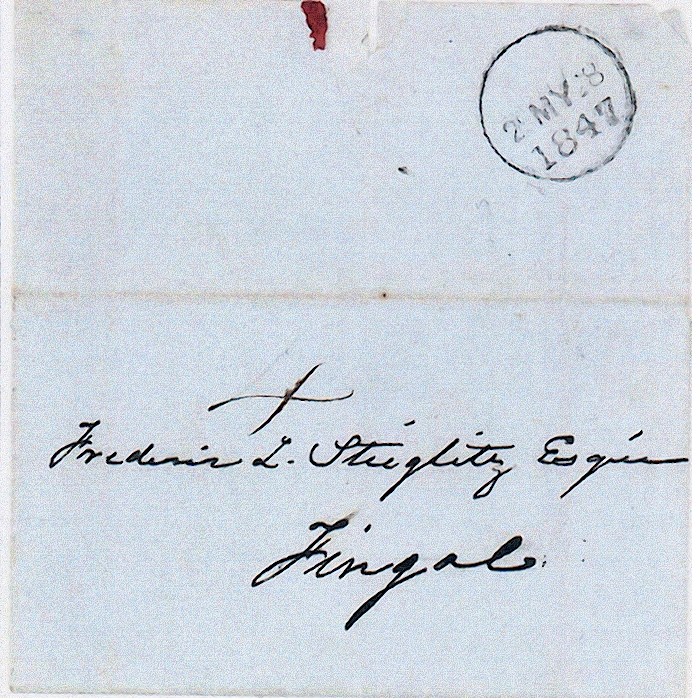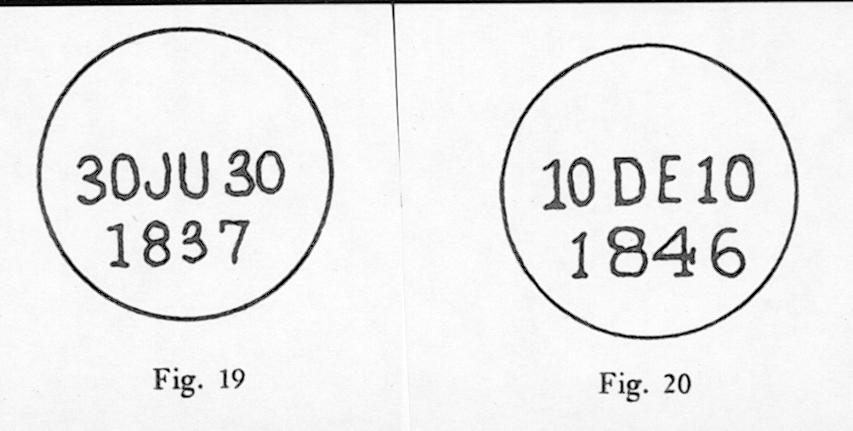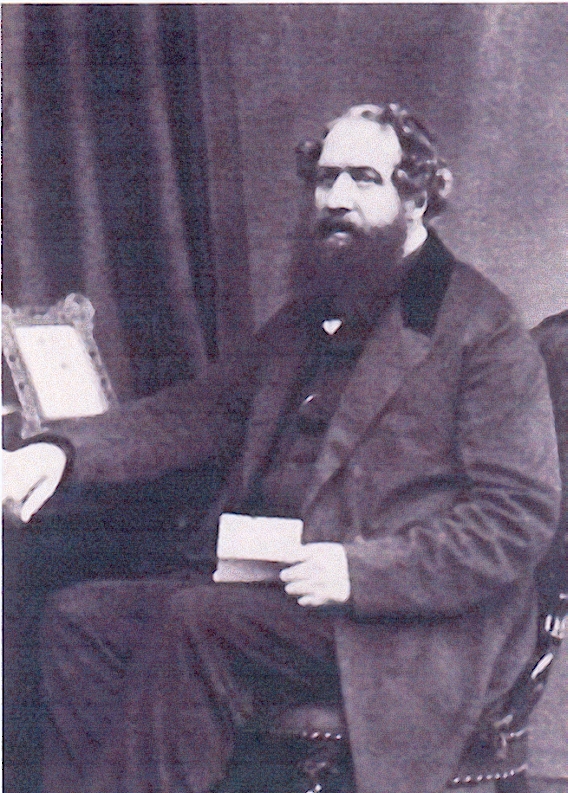This stampless ‘complete’ is addressed to Frederick L. Steiglitz Esquire, Fingal (Van Diemens Land) and the cancellation has no name of the town, but is dated 28 MY 28/ 1847. The letter was rated ‘4′ (Figure 1).

Such un-named Tasmanian cancels originated from Hobart and were used only for local mail. There were 2 such Hobart cancels struck in black, both 28 mm diameter, and classified as Figure 19 used 30 June 1837 to 22 September 1837 (year figure 14 x 13½ mm) and Figure 20 used 31 August 1841 to 15 March 1850 (17 x 5 mm), as in Campbell, Purves & Viney (1962) (Figure 2).

Frederick Lewis von Stieglitz, pastoralist, was born on 13 October 1803 in Ireland, the eldest son of Baron Heinrich Ludwig von Stieglitz and Charlotte, and grandson of Christian Ludwig von Stieglitz who had been created a baron of the Holy Roman Empire in 1765. In 1802 the family moved from Pilsen, Bavaria, to a property known as Lewis Hill in Ireland and after nine years to Cookstown, County Tyrone. When the baron’s death in 1824 left the family of six sons and two daughters poorly provided for, they decided to emigrate to Van Diemen’s Land. Frederick Lewis, Francis Walter and Robert William von Stieglitz arrived at Hobart Town in the Lion on 7 August 1829.
Frederick, an active and intelligent young man in the lieutenant-governor’s opinion, received 2000 acres, which he took up near Fingal and named Killymoon. In 1830 he married Catherine Christiana McNally, who owned an inn at Kempton. He bought a further 3000 acres near Fingal and in the next decade built Killymoon House in stone in the style of Killymoon Castle, County Tyrone. In 1841 he was appointed a justice of the peace and in 1846 became a nominee in the Legislative Council. In 1856 he was elected to represent Fingal in the first elective assembly. After his wife’s death in 1857 he sold Killymoon, returned to Ireland, assumed the title of baron, and became a justice of the peace for the Counties of Armagh and Down. In 1859 he married Hester Anna, the daughter of George Blacker and Anne. He died without issue on 14 May 1866. A picture of Frederick Lewis Stiegliz is shown in Figure 3.

The second brother, Henry Lewis von Stieglitz (1808-1890), arrived in Hobart in the Juno in November 1830, bringing about £1600, and was granted 1500 acres at Apsley, naming his property Green Lawn. He died at Sunnyside, Nile, Tasmania.
Two other brothers, John Lewis (1809-1868) and Robert William von Stieglitz (1816-1876), received no land in Van Diemen’s Land but were among the first settlers at Port Phillip, where they took up sheep runs first in the Geelong district and later at Ballan on the Werribee. John also held Station Peak for eight years. In 1836 he married Emma (1807-1880), the daughter of George Cowie, bookseller and alderman of London. She was a talented artist, producing landscapes and botanical studies. John sold his 16,000 acres at Ballan in 1852 and returned to Ireland, where he became a justice of the peace for County Tyrone. He died there on 22 August 1868 without issue. After acquiring 5000 acres at Ballan and 192,000 acres at Lake Hindmarsh in the Wimmera. Robert also sold out and returned to Ireland, where he died on 18 March 1876.
Francis Walter von Stieglitz (1811-1889), who had studied farming before he emigrated, was given a maximum grant of 2560 acres at Fingal and called it Lewis Hill. In September 1843 he was appointed a justice of the peace for Fingal and in 1864 coroner, officiating both in Fingal and Launceston. In 1840 he married Anne Ransom, by whom he had six sons and two daughters. He retired to Launceston in 1880 where he died on 14 April 1889.
The sixth and youngest brother, Charles Augustus (1819-1885), had been left at school when the elder brothers emigrated and he did not arrive until 1839. He joined his brothers in Victoria, acquiring 24,000 acres at Durdidwarrah, Portland Bay District. He sold out soon after the death of his mother, the baroness, in November 1852, and returned to Ireland where he bought Knockbarragh Park, County Down, in 1859. He died there in July 1885.
The family is commemorated in Victoria in the old gold-mining town of Steiglitz (so spelt), and in Tasmania in a township reserve at George’s Bay.
The account of the family is taken from the Australian Dictionary of Biography as is the photo of Frederick Lewis Stieglitz.